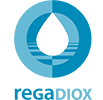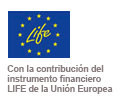The agricultural conference held last Wednesday, November 5 at La Caixa’s Auditorium in Aranzadi brought together more than 250 professionals from the sector with the main objective of analysing the current situation and future prospects of this strategic sector in the economy of Navarre. Mr Jesús Mª Echeverría, Managing Director of INTIA, delivered his lecture on “The impact of the Navarre Canal in the agri-food sector”. He analysed the irrigated area of the Navarre Canal from both a public and the farmer perspective and highlighted its benefits for the agri-food industry. Mr Echeverría emphasised that it is a productive product that is yielding indisputable returns. He indicated that, the total cost (dam, canal, irrigated area and equipment of parcels) amounting to 1,600 million euros, public investment is returned by taxes as well as by other means such as PAC payments, charges for supply to population, for hydroelectric production or returns due to employment directly and indirectly generated in the agricultural and in the agri-food sectors. The presentation detailed the socio-economic impacts that INTIA has thoroughly analysed in the irrigation systems installed during the first phase of the Navarre Canal. Thus, the farmer must pay for an initial investment that includes 15% of the cost of the work of general interest (irrigation network to irrigation point in the parcel) and the equipment in the parcel that ranges between 2,400 € and 2,800 € / Ha for drip irrigation systems from and between 2,900 and 3,400 € / ha for sprinkling irrigation. This investment is eligible under the calls for aids for the modernisation of agricultural holdings. The annual expenses range from 190 to 350 € / Ha and year according to consumption. These figures are well below the average of the majority of national Irrigation Associations with pressurized irrigation systems, whose average costs range between 350 and 700 € / Ha and year. Much of this saving comes from the energy-efficient design of the irrigation network that has sought to reduce costs for the farmer. The first phase of the Navarre Canal is already fully operational, scheduled to cover 21,035 hectares where 48 different crops are cultivated with an 8% of the surface being used for double harvests (11% if we consider only the hectares fitted with irrigation equipment, 17,955 Ha, which is where double crops are actually being done). The number of possibilities resulting from the conversion of dry to irrigated farming has allowed to increase the gross value obtained by the harvests in a very important way, so that where there previously existed a mix of barley (60%), fallow ( 15%) and vine (10%), the distribution of irrigated crops has led to another mix where grain maize (35%), vegetables (14%), barley (12%) and vine (11%) are predominant. During 2013, 3,298 hectares of vegetables have been cultivated, among which tomatoes, beans, sweet corn, peas and beans predominate. The presentation ended with an economic overview for the farmer that can be summarised thus: in 2013 the business profit is 6 times higher for irrigated crops (€ 828 / Ha versus € 138 / Ha) and employment rate is 2.6 times higher in irrigated farming.
INTIA presents “The impact of the Navarre Canal in the agri-food sector of Navarre” during the Agricultural Conference Horizon 2020
- EU AGREES TO REDUCE GHG EMISSIONS BY 40%
- SPAIN’S COMMITMENT IN THE FIGHT AGAINST CLIMATE CHANGE IS STRONG

